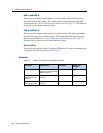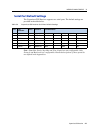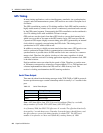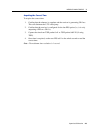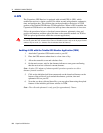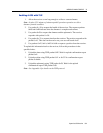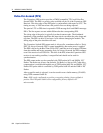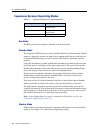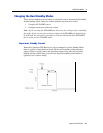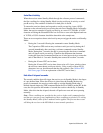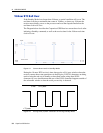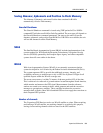
4 OPERATING MODES
54 Copernicus GPS Receiver
Copernicus Receiver Operating Modes
Table 4.1 Copernicus GPS Receiver Operating Modes
Run Mode
The RUN mode is the continuous tracking or the normal mode.
Standby Mode
The Copernicus GPS Receiver provides a Standby Mode in which the module's RAM
memory is kept alive and the real-time clock is running while the rest of the receiver
is turned off. RAM memory is used to store the GPS almanac, ephemeris, and last
position.
Using this information, together with the time information provided by the real-time
clock, the receiver normally provides faster startup times. The type of start-up after
Standby Mode depends on the state of the receiver prior to entering Standby Mode
and on the length of time the receiver spent in the Standby Mode.
If the receiver has almanac, ephemeris, and position information before entering
Standby Mode, and the time spent in Standby Mode is less than two hours, the
receiver will typically perform a hot start.
If the receiver has all of the information listed above, but the time spent in Standby
Mode is more than two hours, the receiver will typically perform a warm start.
The GPS almanac, ephemeris and recent position are automatically stored in non-
volatile Flash memory. Even without time, the receiver can use the information stored
in Flash memory to shorten the start-up time. In all cases, the receiver will use all of
the available information to do the fastest start-up possible.
Note – In the Standby Mode, the power consumption of the unit is very low. See
Copernicus Standby Current, page 55.
Monitor Mode
Monitor Mode is the operating mode for upgrading the firmware stored in the Flash
memory. See Chapter 11 for the firmware upgrade procedure.
Operating Modes Description
Run Mode Continuous tracking or
normal mode
Standby Mode Backup power or low
power mode
Monitor Mode Flash upgrading mode



